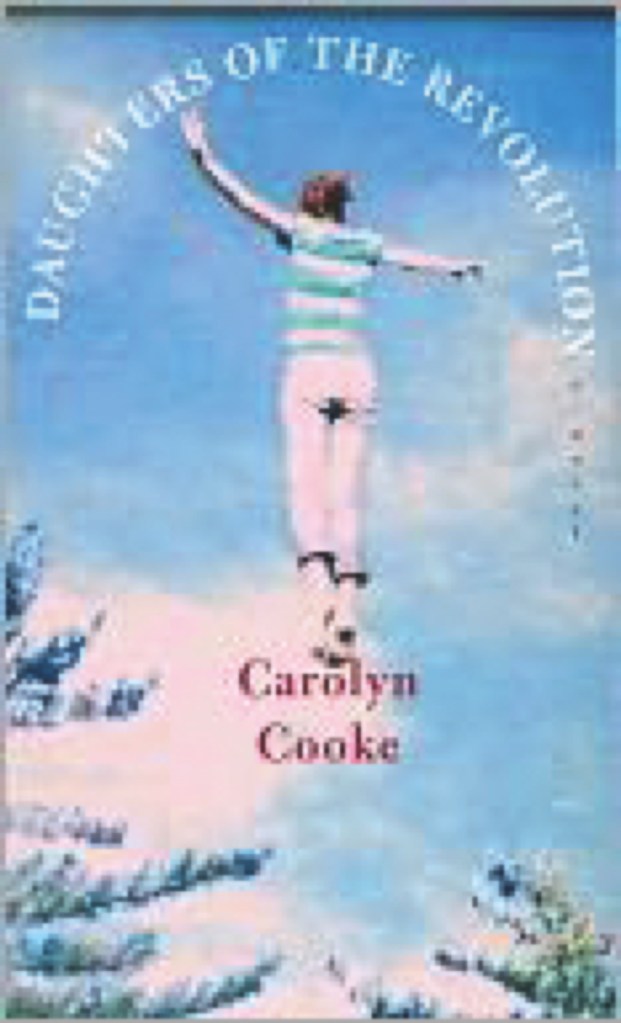The title, “Daughters of the Revolution,” may put off some readers who sense a book laden with American history. Not to worry: The “daughters” in this dazzling episodic novel are of more modern vintage, more brazen inclinations, and their history is decidedly latter-day. They make love, not war, as the ’60s mantra goes, blithely turning the world on its head.
Carolyn Cooke’s playful, astute novel centers around the Goode School, a New England preppie haven whose best days are past and whose fusty, buffoonish headmaster, Goddard Byrd (aka God), refuses to change with the times. On the cusp of 1970s co-education, this all-boys enclave mistakenly admits a young black woman. Her race is not the main problem; the school has other black students. It’s her gender that defies the sanctity of God’s beloved patriarchy.
“Out of respect, the boys called her by her surname, as if she were one of them,” Cooke writes. “She was never Carole, only Faust. But she was not one of anything; she was always singular Because of Carole, the whole world changed.”
Carole and God joust constantly — he, insisting that she read “Heart of Darkness” (“which contained all the seeds of humanity,” he claims); she, refusing out of boredom. He challenges her ideas about art, reality and excellence.
For her senior project, Carole paints a series of portraits of Goode’s 14 headmasters, including God — then sets them on fire. Their demise, of course, is part of her project.
Several years later, in a college essay, Carole depicts Goode’s, and God’s, influence: “It didn’t matter so much that the Head was a sexist or a bigot or a snob, or basically uninterested in my testing him,” she wrote. “The Goode School was like a huge white skin that covered everyone — that covered me. My whole consciousness was black and poor and female every second of every day. The experience damaged, sharpened and defined me, and I would not trade it for anything.”
While the school stands at the novel’s core, several focal points emerge. Other characters come into play, even dominate, and extra-curricular life abounds.
Consider Mei-Mei and EV Hellman, the young widow and daughter of one of Goode’s legendary boys. This mother-daughter duo — one a queen of tragedy, the other a mistress of the comically perverse — supply enough drama and mayhem to propel the book into the new millennium. And when their paths cross with Carole and God, the broader narrative unfolds.
All of Cooke’s characters seem to arrive full-blown, weaving in and out of each other’s lives over time in strange, unexpected ways.
In the matter of extra-curricular life, it should be noted that Cooke has written some of the wittiest sex scenes for these characters, especially for the vain and lecherous God. Suffice it to say that his wife of long-standing decides to leave after he has given her crabs.
“Daughters of the Revolution” is a novel of interlinked stories, many of them standouts on their own. The author, an award-winning short-story writer, handily displays her knack for combining richness and brevity.
As she conveys the changing tenor and politics of late-20th-century America, she exposes cracks in the mortar of Goode’s privileged world. In many ways, though, this is a book about the stories people tell themselves and how those narratives permeate their lives.
Cooke, a Maine native who lives in California, has created a handful of droll, engaging characters who fully inhabit these pages. If you read just one book of fiction this year, this should be the one.
Joan Silverman of Kennebunk writes op-eds, essays and book reviews for numerous publications.
Send questions/comments to the editors.



Success. Please wait for the page to reload. If the page does not reload within 5 seconds, please refresh the page.
Enter your email and password to access comments.
Hi, to comment on stories you must . This profile is in addition to your subscription and website login.
Already have a commenting profile? .
Invalid username/password.
Please check your email to confirm and complete your registration.
Only subscribers are eligible to post comments. Please subscribe or login first for digital access. Here’s why.
Use the form below to reset your password. When you've submitted your account email, we will send an email with a reset code.